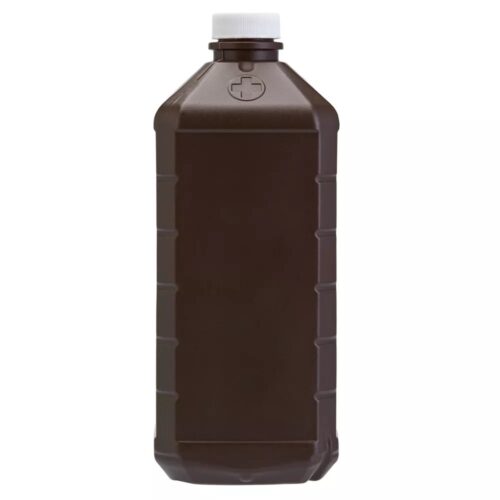

We may earn revenue from the products available on this page and participate in affiliate programs. Learn More ›
As you might remember from chemistry class, hydrogen peroxide is water with an extra oxygen atom, hence the chemical distinction H₂O₂. Though there’s debate about using hydrogen peroxide as a wound disinfectant because it slows healing time, it has potent antibacterial, antiviral, antifungal, and bleaching properties. A 3-percent solution of hydrogen peroxide, which you can buy in drugstores, supermarkets, or online retailers, is strong enough to cut through most organic stains and mild rust. Hydrogen peroxide is less expensive than many commercial cleaners and, better yet, it is a natural disinfectant. Read on to discover dynamite uses for that little brown bottle.
Is hydrogen peroxide safe to use?
Does hydrogen peroxide kill germs? Yes, but it’s super important to take precautions for using hydrogen peroxide safely. While it can be an effective disinfectant and cleaning agent, it can also be hazardous if not handled properly. Here are some dos and don’ts to keep in mind when using hydrogen peroxide:
Do:
- Use the correct concentration for the task at hand. Most household uses call for a 3-percent solution.
- Store it properly. Store hydrogen peroxide in a cool, dark place, away from sunlight and heat sources.
- Rinse the area thoroughly. After using hydrogen peroxide, rinse the surface or item with water to remove any remaining peroxide residue.
- Take safety precautions. Work in a ventilated area, wear gloves and rinse your hands, since hydrogen peroxide can irritate the skin and eyes.
Don’t:
- Mix hydrogen peroxide with bleach. Mixing hydrogen peroxide with bleach can create a toxic gas that is harmful to breathe.
- Mix hydrogen peroxide with vinegar. When combined, hydrogen peroxide and vinegar can create a corrosive acid that can damage surfaces and cause respiratory irritation.
- Ingest it. Hydrogen peroxide should not be ingested, as it can cause serious health problems, including vomiting and severe internal burning, depending on the concentration.
- Use it without testing it first. Hydrogen peroxide can discolor or damage certain materials, such as fabrics, leather, and wood, so be sure to test it on a small, unnoticeable area before using.
Hydrogen Peroxide Uses
Most of us purchase the ubiquitous brown bottles at drugstores, but hydrogen peroxide’s applications extend far beyond the medicinal. You’ll want to keep this antifungal and antibacterial wonder in a caddy with your other housecleaning supplies. Stash a bottle on your potting bench, too, because it’s a handy helper for gardeners.
1. De-gunk tile and grout.
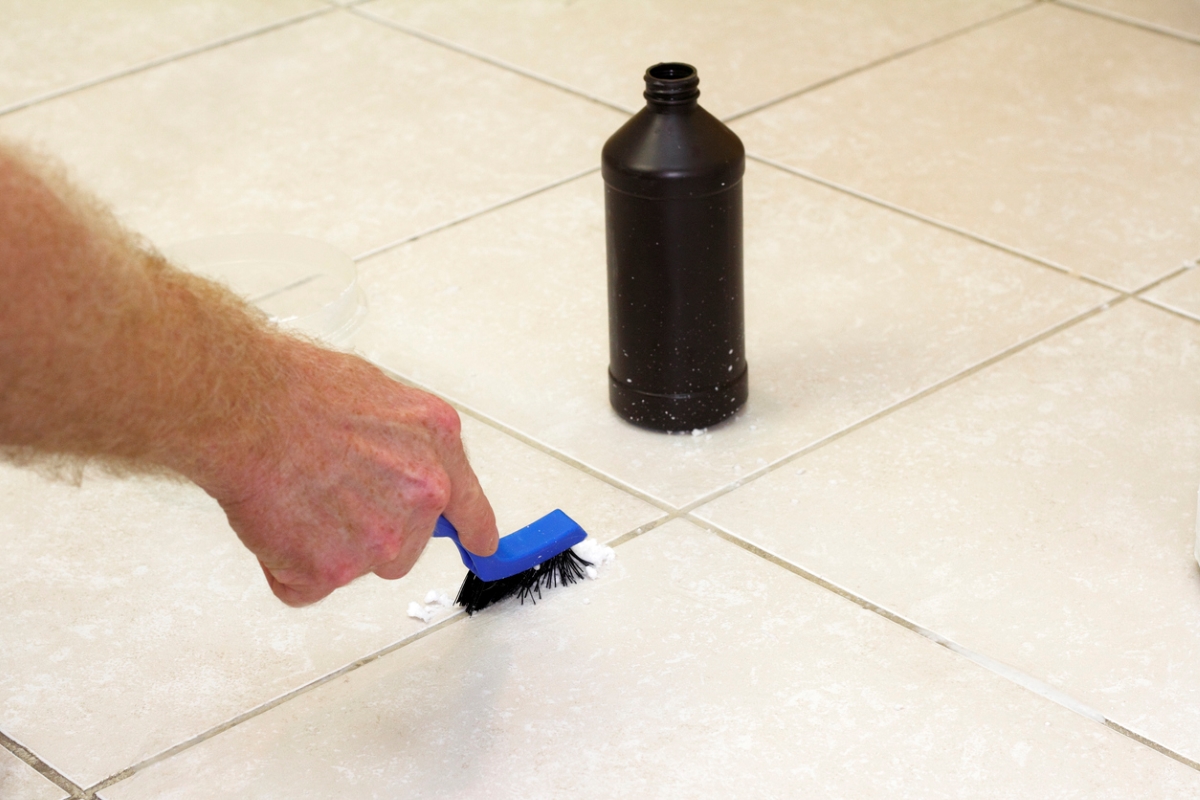
Hydrogen peroxide mixed with sodium carbonate is known as oxygen bleach. Add water, and the compound releases an oxygen molecule to help it lift mold and stains from the surface of natural materials. For a potent homemade grout and tile cleaner, mix ½ cup of baking soda with ¼ cup of hydrogen peroxide in a sealable container. Add a teaspoon of liquid dish soap to the hydrogen peroxide and baking soda mix, close the lid, and shake until fully combined. Wearing protective gloves, apply the mixture to tile and grout, let it sit for at least 5 minutes, then rinse clean with water.
RELATED: How to Use OxiClean Around the House
2. Freshen up your mattress.
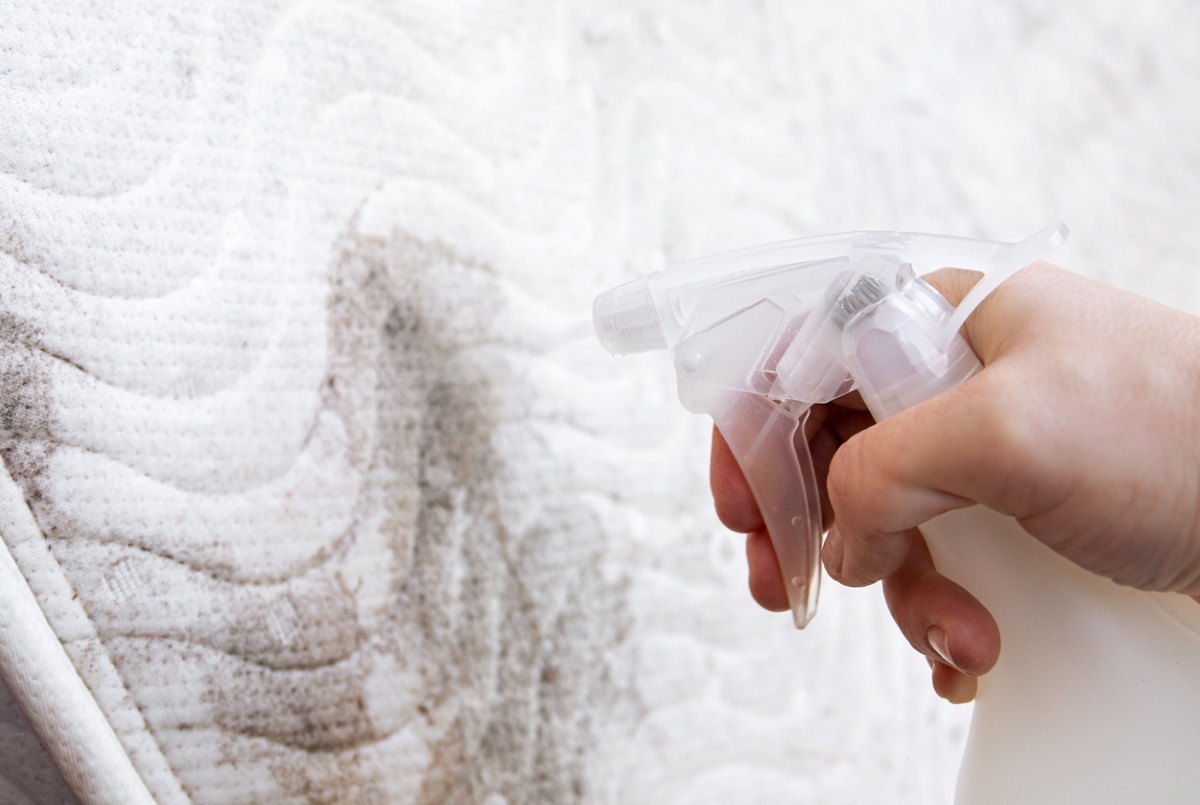
To really rest easy, deep clean your mattresses about every 6 months. Strip the linens and padding, and vacuum the mattress itself. For mattress stains caused by food, drinks, bodily fluids, and even crayons, create a mild solution of one part water to one part hydrogen peroxide. Using a clean, soft toothbrush, work this solution into the stain, let it sit for 5 minutes, and repeat if needed. Once stains have faded, use a hair dryer to dry excess moisture before making the bed.
3. Clean the bathtub without commercial chemicals.

Mold and grime in the shower are gross! The problem with getting rid of this gunk is that many commercial tub and tile cleaners contain bleach, ammonia, and artificial fragrances that can be harmful to respiratory health, caustic to skin, and generally bad for the environment. For a safer solution, make a paste of 2 parts baking soda to 1 part hydrogen peroxide. Apply to the tub and shower area, wait for 30 minutes, then rinse. Follow with a spritz of a half-vinegar and half-water solution to dissolve any residue and soap scum.
RELATED: 13 Unusual Tips for Your Cleanest Bathroom Ever
4. Refinish metal hardware.

Want an instant antique? Bring a vintage-looking patina to any metal that contains iron or an iron alloy (like steel), which will rust naturally when exposed to water and oxygen. To achieve an aged-looking finish on metal hinges and fixtures, you can use the corrosive nature of vinegar and hydrogen peroxide.
First, remove any paint and sand the surface. Spray white vinegar onto the metal surface and wait 5 minutes for the corrosion process to begin. Next, mix 2 cups of 3-percent hydrogen peroxide, 4 tablespoons of white vinegar, and 1½ teaspoons of table salt in a large spray bottle. Shake thoroughly, then soak the metal surface. Rust should start forming immediately. Fumes will result from mixing this solution, so always work in a well-ventilated area. (Get full step-by-step instructions.)
5. Get rid of rust.
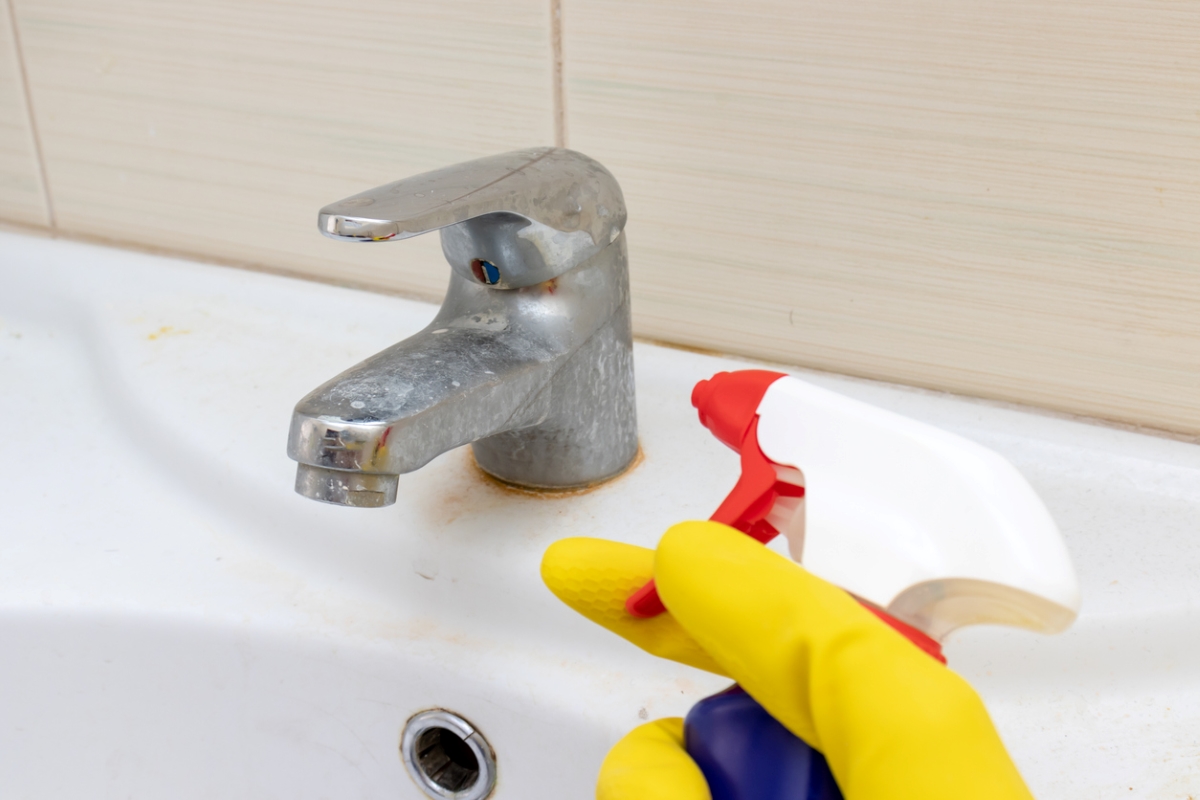
While hydrogen peroxide can speed the rusting process, it can also remove rust. In a bowl, place equal parts cream of tartar (a mild powdery acid used in baking and available at grocery stores) and baking soda. Add a few drops of hydrogen peroxide, just enough to form a paste. Rub the paste onto the rusty objects, wait an hour, then wash them with water. This method works best for light to moderately rusted items like tools and toys. It’s also effective on the orange stains in your sink or tub that are caused by rust in your tap water.
6. Sanitize your cutting boards.
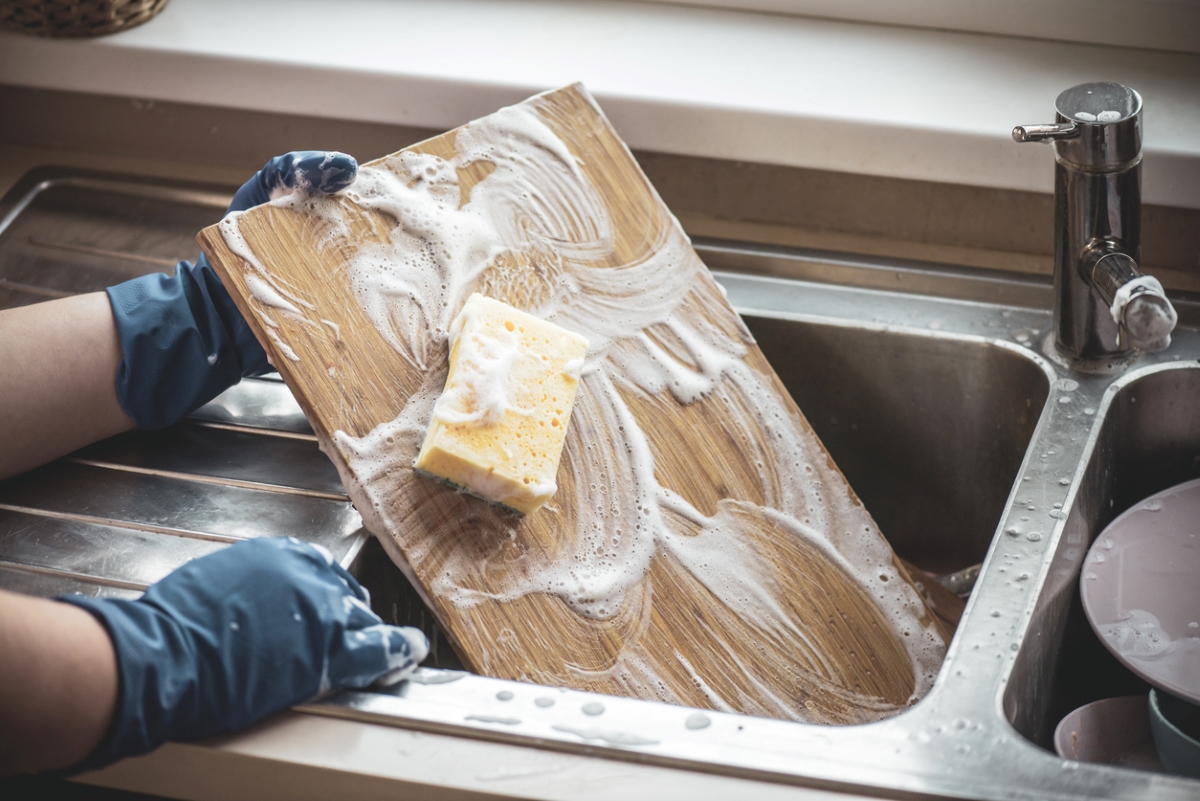
Wood cutting boards can develop small cuts in the surface that trap unhealthy bacteria. Unlike plastic, wood is porous and will warp and possibly crack if it is cleaned in the dishwasher. To clean and disinfect a wood cutting board without damaging it, spray it with white vinegar, wait 5 minutes, then wipe it down. Next, pour on enough 3-percent hydrogen peroxide to cover the entire cutting board, distributing it evenly with a clean sponge or paper towel.
Let the solution sit for another 5 to 10 minutes, then sprinkle salt over the surface and rub it into the wood grain gently with half a lemon, which will soak up any remaining odors. Allow the lemony salt to soak into the wood surface for at least 10 minutes or overnight, then wipe the surface with a damp cloth and allow it to air dry. For the best results, buff the wood using food-grade almond or walnut oil, and wait 6 hours before use.
RELATED: The Best Cutting Board Oils for Maintaining Butcher Block
7. Banish toilet bowl germs.
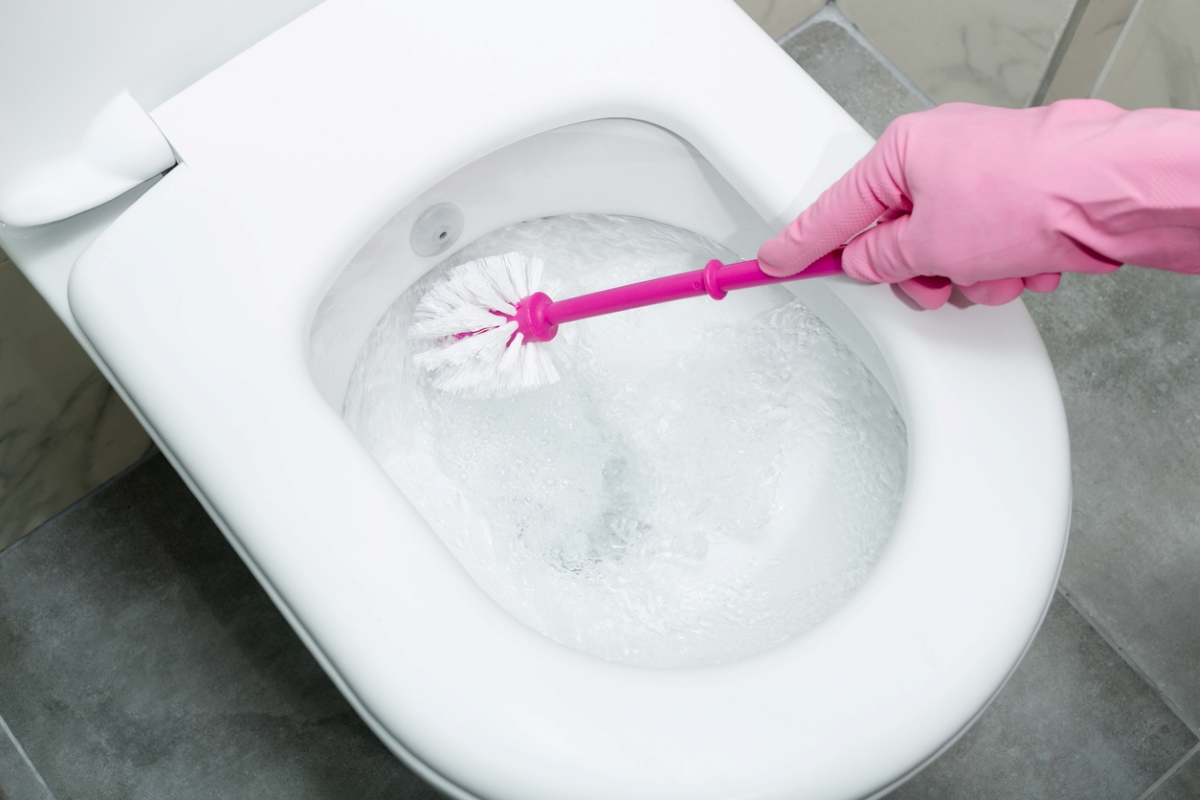
Keep your toilet free of bacteria and looking its best with a weekly dose of hydrogen peroxide: Pour ½ cup of hydrogen peroxide into the bowl, let it sit for 30 minutes, then scrub with a toilet brush. Though potent, this treatment will do no harm to water systems. To freshen the brush, pour a little extra hydrogen peroxide onto the bristles and allow it to air dry before placing it back in the holder.
8. Help protect your plants from root rot.
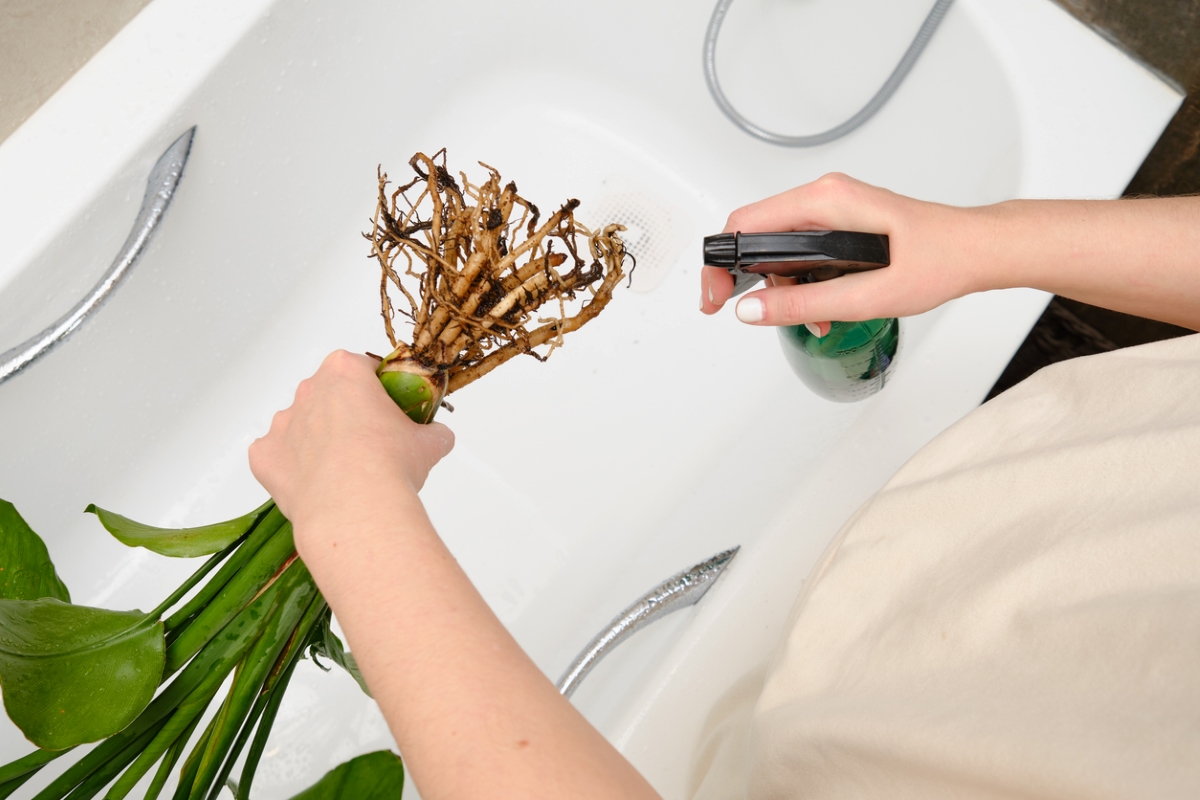
A mild dose of hydrogen peroxide spray can be your plants’ best friend. The extra oxygen atom in H₂O₂ can benefit the growth process and can also help prevent conditions such as fungus and root rot. For mature houseplants, mix 1 tablespoon of 3-percent hydrogen peroxide and 1 cup of water in a spray bottle and soak the soil after it has dried. Make sure the soil dries completely before applying it again. It can help some with plants that appear to have fungal diseases or are on their way to root rot, but take a look at the plants’ growing conditions and correct other problems like compacted soil, overwatering, and poor air circulation as well.
A less concentrated form can serve as an antifungal for young seed starts. Use 1 tablespoon of 3-percent hydrogen peroxide per quart of water. Using too much can harm seedlings.
When growing plants using hydroponics, add pure, or food-grade, hydrogen peroxide 1 teaspoon at a time after rinsing and refilling a water bowl to help prevent root rot. This product is free of the chemicals or toxic materials added to regular hydrogen peroxide that help prolong shelf life.
RELATED: 14 Symptoms of an Unhappy Houseplant (and How You Can Treat Them)
9. Reduce pests on houseplants.
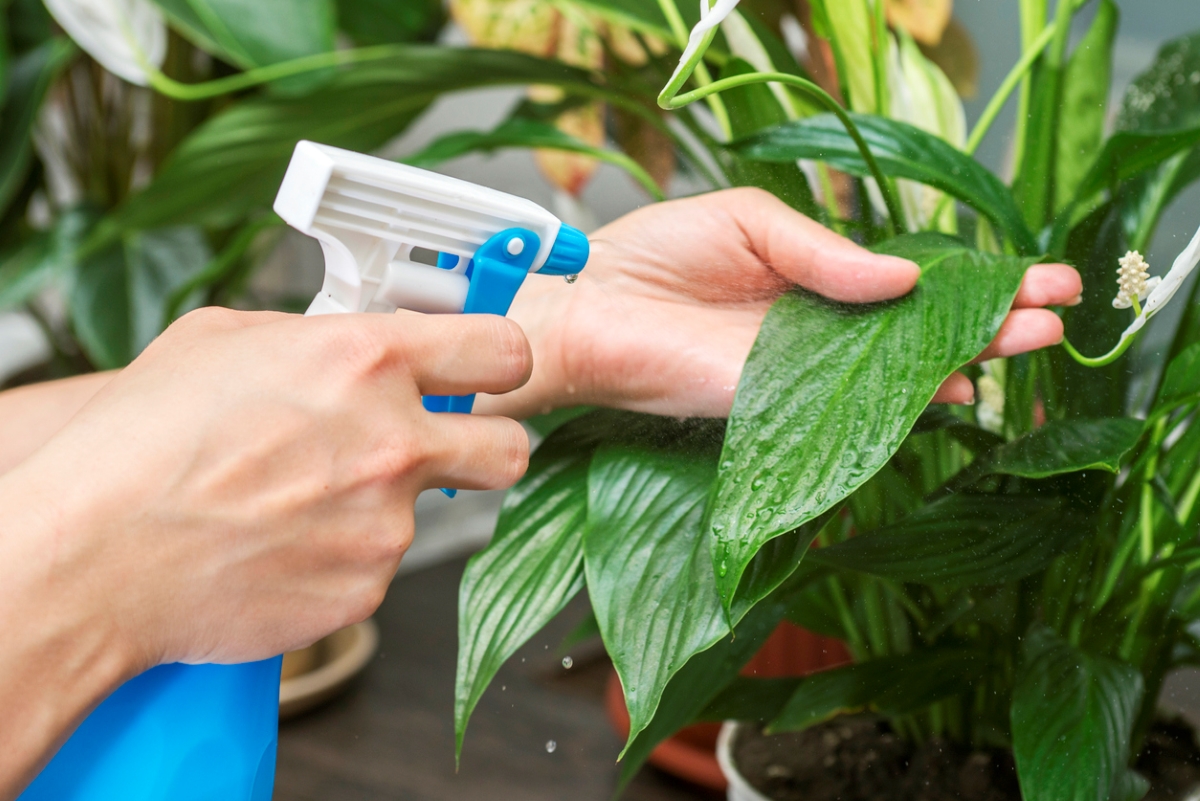
To reduce mites, aphids, and fungus gnats in your garden, mix ½ cup of 3-percent hydrogen peroxide and 1 gallon of water in a large pump sprayer. When spraying foliage, be sure to soak not just the tops but also the undersides of leaves where pests can hide. Spray on the top layer of soil to help reduce fungus gnats. Be aware that most of the solution evaporates, so spray when you see the pests on the plant. Again, addressing cultural problems such as poor drainage of containers can help control problems with pests.
Hydrogen peroxide safety also applies to plants. Using too much can damage plants and beneficial organisms, which is why it’s a good idea to test a small amount of these solutions on leaves or soil first before spraying larger areas. Discontinue use if you see effects like wilting or excess dryness.
10. Wipe away water marks on granite.
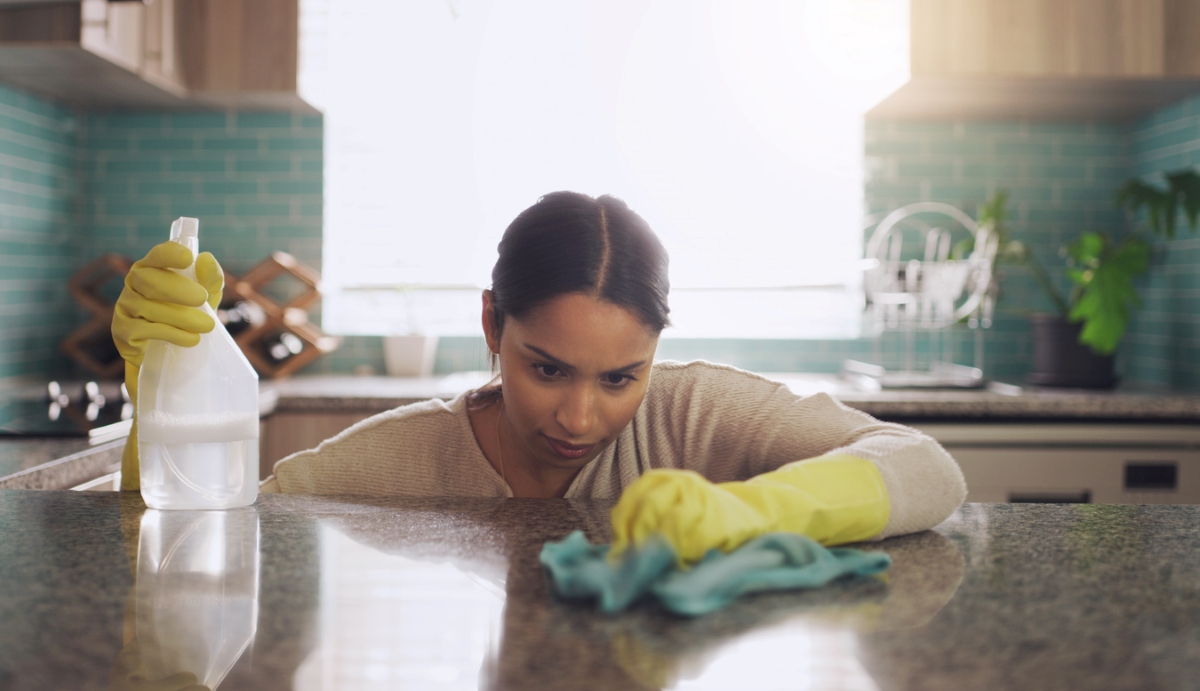
Pesky water marks appear all too easily on granite countertops, but a little baking soda and hydrogen peroxide will banish them in a flash. In a small bowl, mix ½ cup of baking soda with a few drops of 3 percent hydrogen peroxide to form a paste. Spread over the stained area, let sit for 5 to 10 minutes, and wipe clean with a damp cloth. For tougher water stains, cover the mixture with plastic wrap and tape down the edges. Let sit overnight, then wash clean and dry with a soft towel.
11. Remove stains from marble.
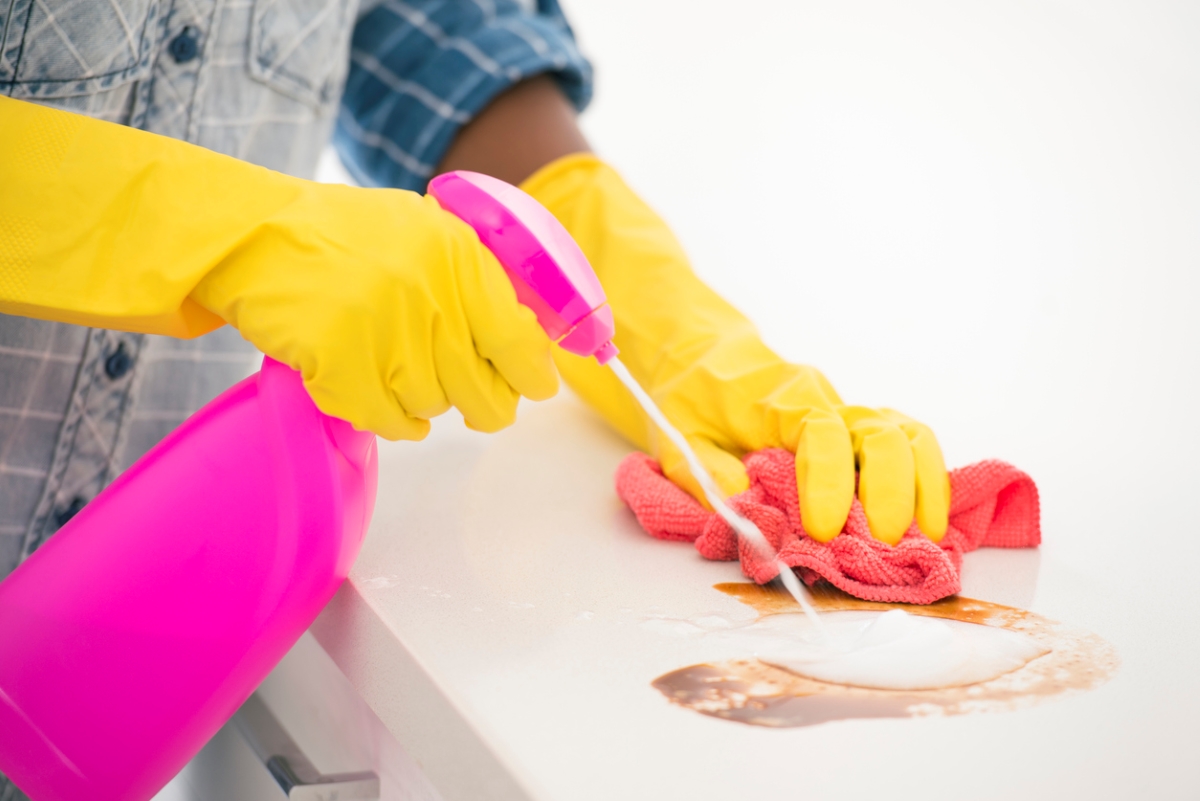
Knowing how to clean stains from marble countertops is key to maintaining these surfaces. If the stain is organic in nature (food stains are typically pinkish-brown when dry), mix 1 cup of 12-percent hydrogen peroxide with a few drops of ammonia in a spray bottle. Be sure to work in a well-ventilated space (you may want to turn on the exhaust fan over your stove or open the windows), and wear gloves and eye protection.
Spray this mixture onto the stain, let sit for a minute or two, then wipe it clean with a towel or chamois. Repeat until the stain disappears, then rinse well with water and dry with a clean towel.
RELATED: 10 Ways You’re Accidentally Ruining Your Countertops
12. Get rid of skunk stink.
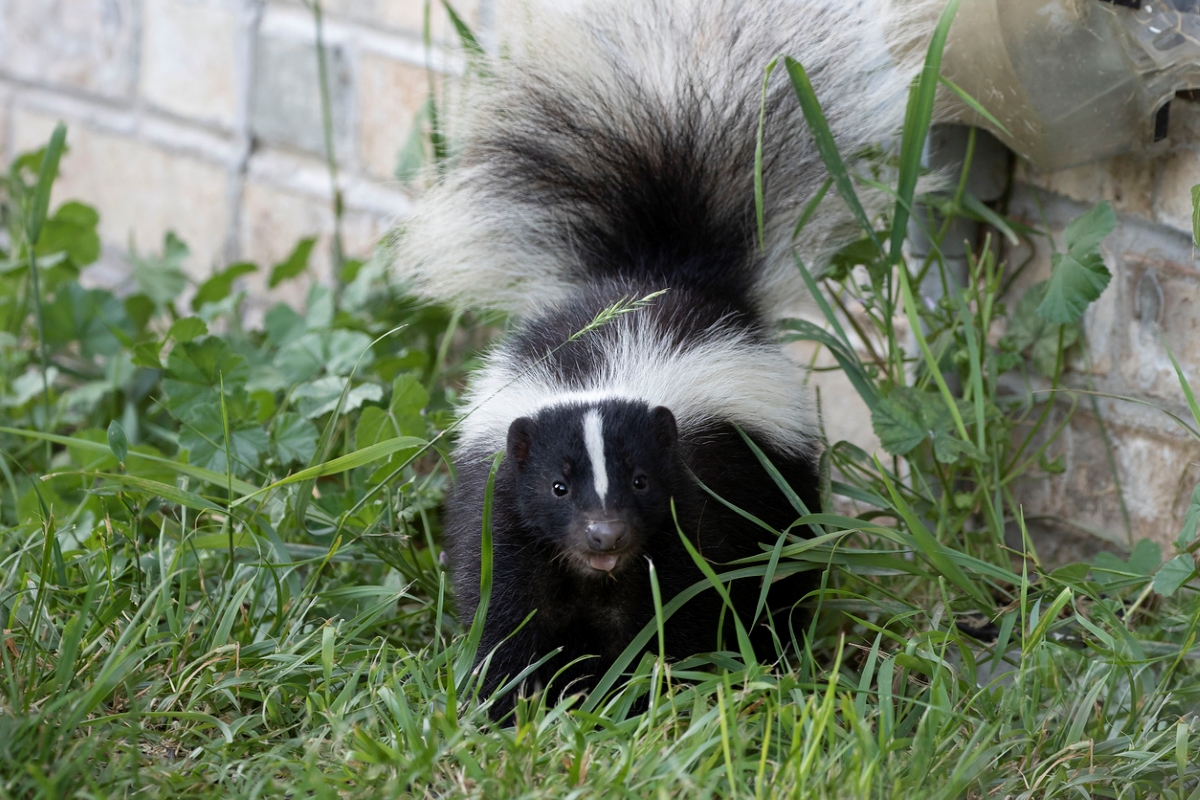
Have a run-in with a stinky skunk? Hydrogen peroxide to the rescue! To deodorize clothing that has been sprayed, mix one part of 3-percent hydrogen peroxide with six parts water (don’t make the solution any stronger, since hydrogen peroxide can damage textile fibers). Soak the stained clothing in this solution for an hour or two, rinse it thoroughly with cold water, and then launder it on a cold setting.
If you or your pet has been sprayed by a skunk, combine a quart of 3-percent hydrogen peroxide, ½ cup of baking soda, and 1 teaspoon of dishwashing detergent. Using a rag, rub yourself or your pet down (avoiding eyes and sensitive areas). When the odor subsides, rinse with clean water (outside, ideally) to remove as much of the mixture and odor as possible before coming back inside.
13. Freshen up lawn furniture.
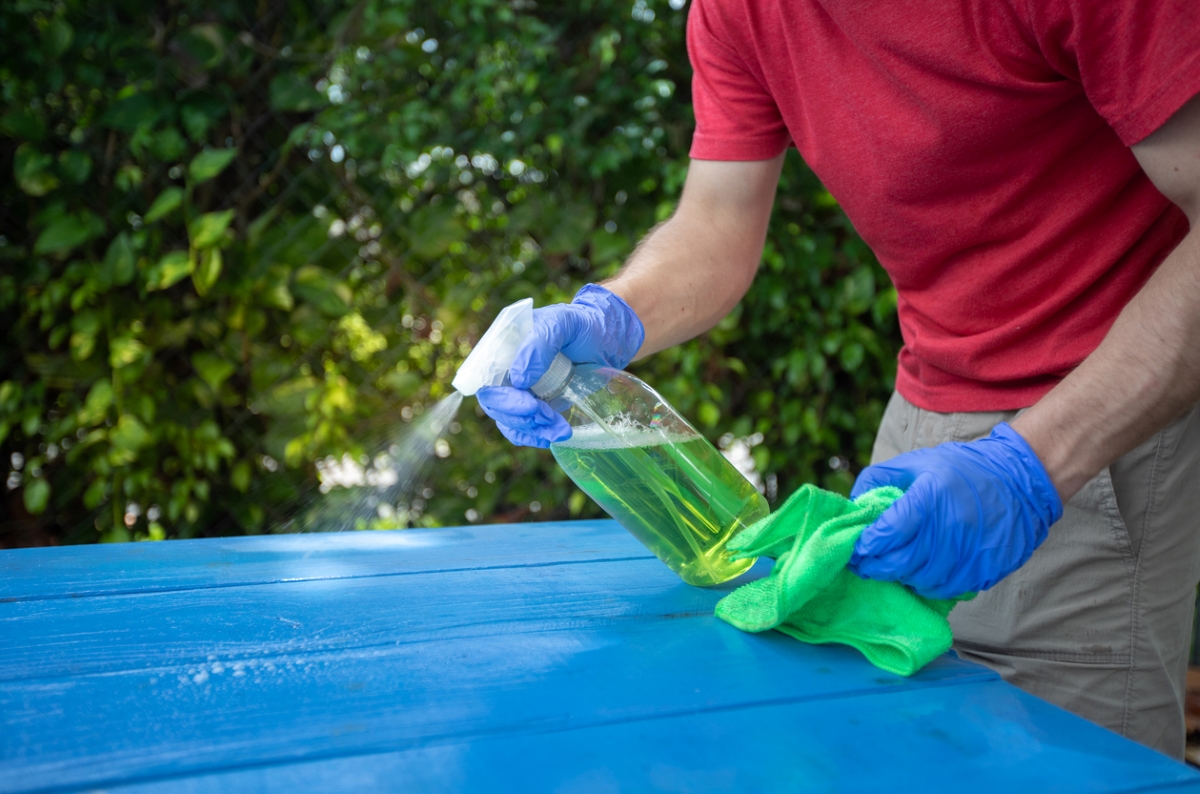
One of the great outdoor uses for hydrogen peroxide is to clean gunk and grime from outdoor furniture without using harsh chemicals or busting out the power washer. Pour 1 gallon of warm water into a large sprayer. Add ¼ cup 3-percent hydrogen peroxide, a few drops of dish soap, and a scoop of borax (a sodium-based mineral powder). Spray metal chairs and tables with the solution and let it work for 10 to 15 minutes. Scrub with a soft nylon brush or sponge, then rinse with a garden hose.
RELATED: Going Green and Keeping Clean: Outdoor Edition
14. Polish your mirrors.

Cleaning mirrors can be tricky because so many products leave streaks behind. If you don’t want to use a commercially made mirror cleaner, a hydrogen peroxide cleaner is an eco-friendly alternative. Fill a spray bottle with undiluted 3-percent hydrogen peroxide and spray it onto your mirrors. Wipe it away with a paper towel or lint-free microfiber cloth, and enjoy your sparkling clean, streak-free reflection.
15. Rid a humidifier of bacteria.
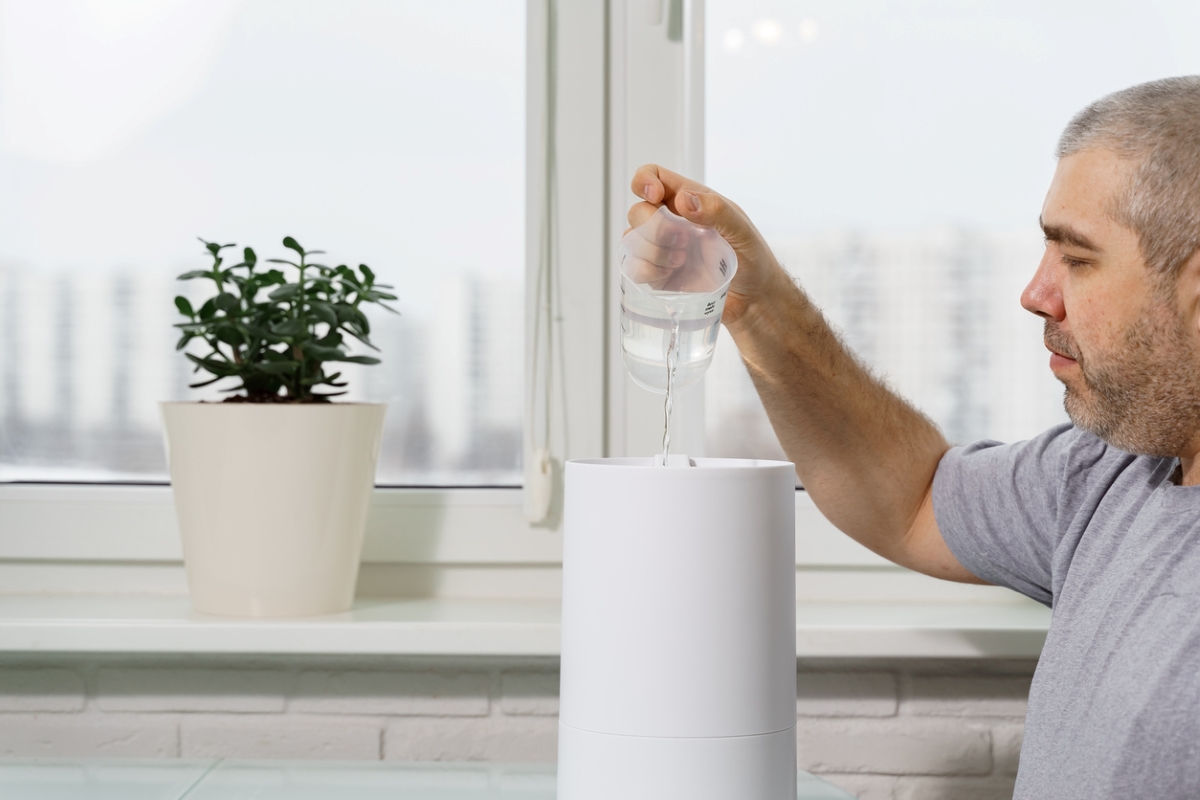
Using a humidifier can be beneficial for your respiratory system, but many users fail to clean their humidifiers regularly, leading to the buildup of mold and potentially harmful bacteria. Humidifiers are easy to disinfect using hydrogen peroxide. Fill the humidifier with one part hydrogen peroxide to four parts water. Let it sit for half an hour, then rinse out the interior with cold water.
RELATED: We Researched 57 Humidifiers and Our Top Pick Runs for 60 Hours on One Fill
16. Brighten dingy whites.
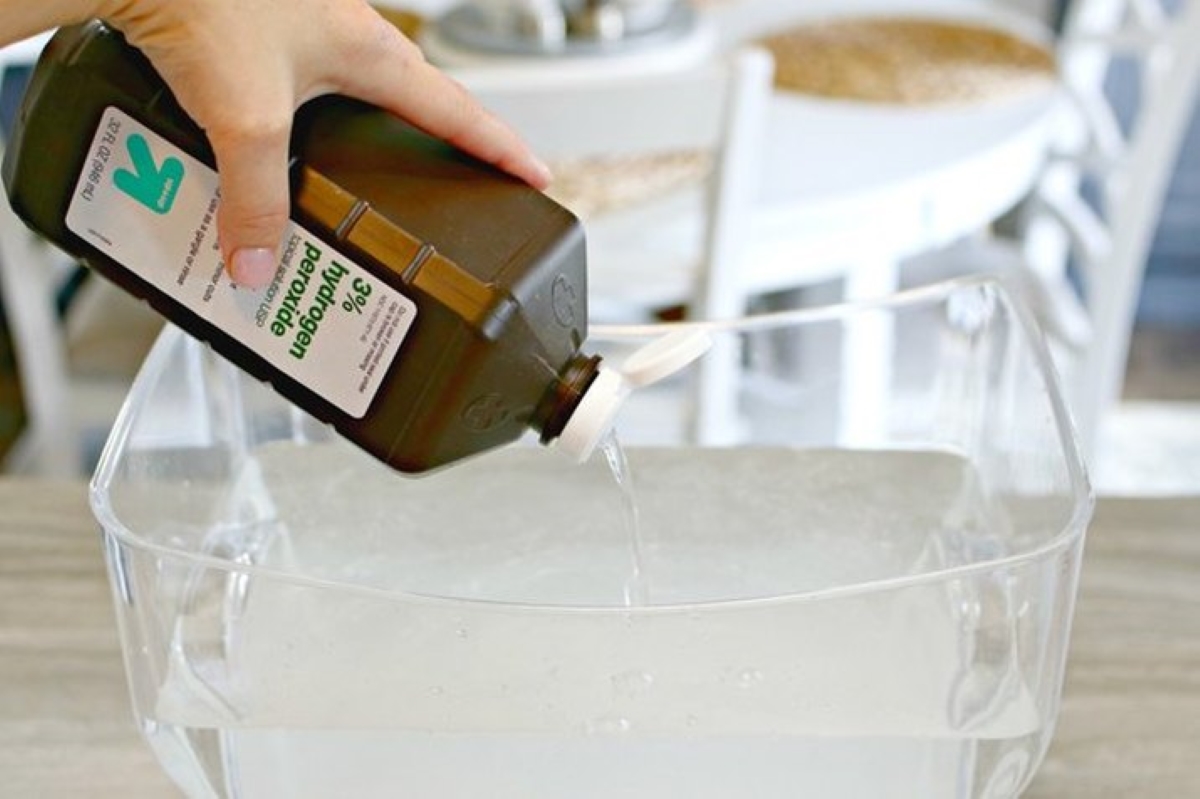
Hydrogen peroxide comes in handy while doing laundry, especially when it’s time to wash white linens and clothing. To brighten up dingy whites, add 1 cup of 3-percent hydrogen peroxide with 2 cups of water directly to your washing machine. While hydrogen peroxide can lighten fabrics, it’s more eco-friendly than using chlorine bleach. It also works well as a stain remover when dealing with protein-based or plant-based stains. Apply hydrogen peroxide to a test patch first to test color-fastness. If everything looks OK after 10 minutes, apply some undiluted 3-percent solution to the affected area and let it sit for 10 minutes before throwing the item in the wash.
17. Clean kids’ germy toys.
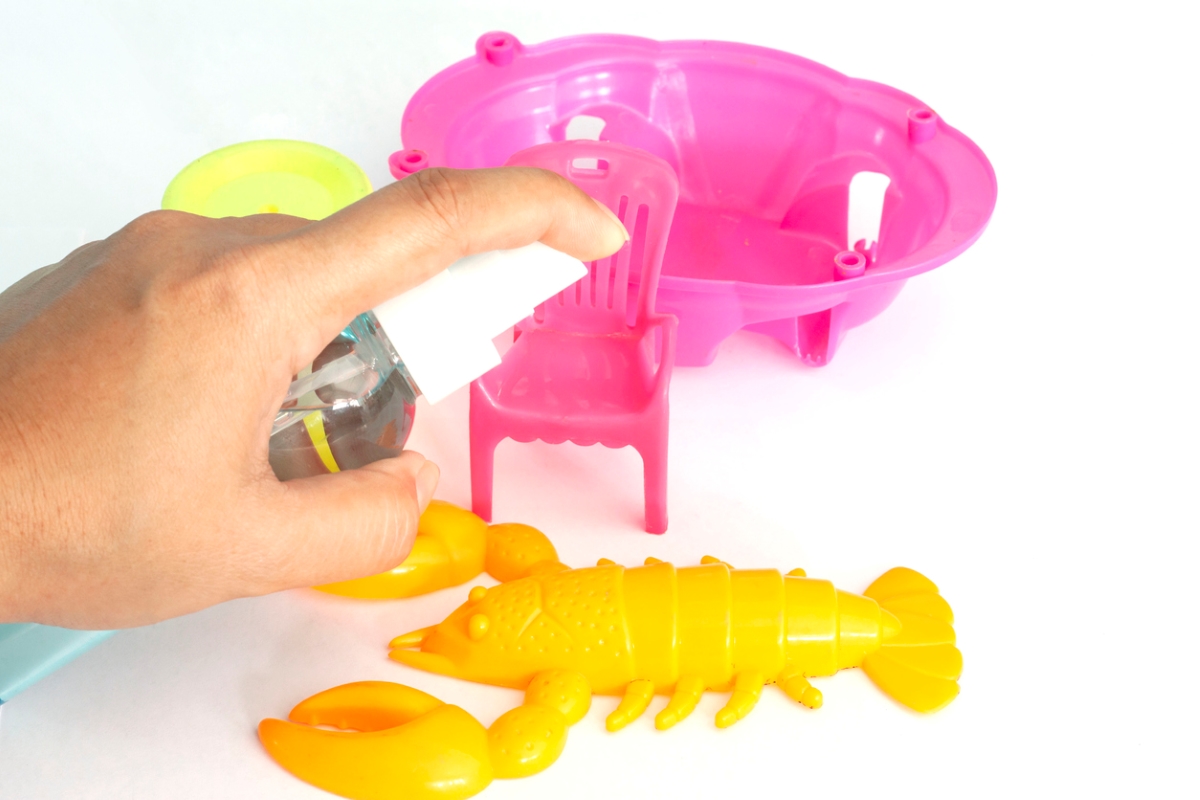
Like any other surface in your home, children’s playthings can become riddled with germs. It’s especially important to clean and sanitize them regularly because kids are always in close contact with them, sometimes even putting toys in their mouths. There are two ways to sanitize toys with hydrogen peroxide: spray individual toys with undiluted hydrogen peroxide, or fill a container with a 50/50 mixture of hydrogen peroxide and water and soak multiple toys at once.
18. Disinfect stinky sponges.
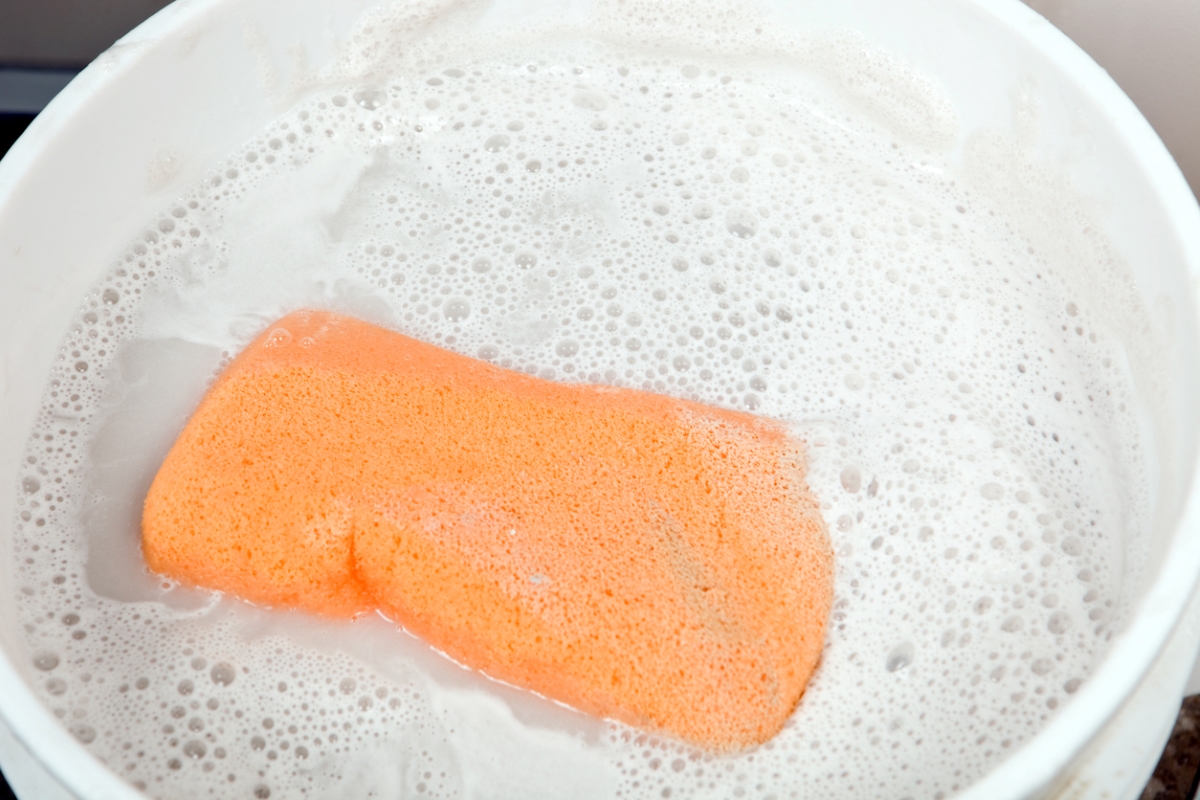
Sponges come in handy for cleaning every room in the house, but they can harbor germs and bacteria if they’re not sanitized regularly. It’s easy to sanitize dish sponges after each use by soaking them in a mixture of water and hydrogen peroxide. For best results, mix one part water and one part hydrogen peroxide, and allow the sponge to sit in the mixture for at least 10 minutes.
19. Prevent algae growth in the pool.
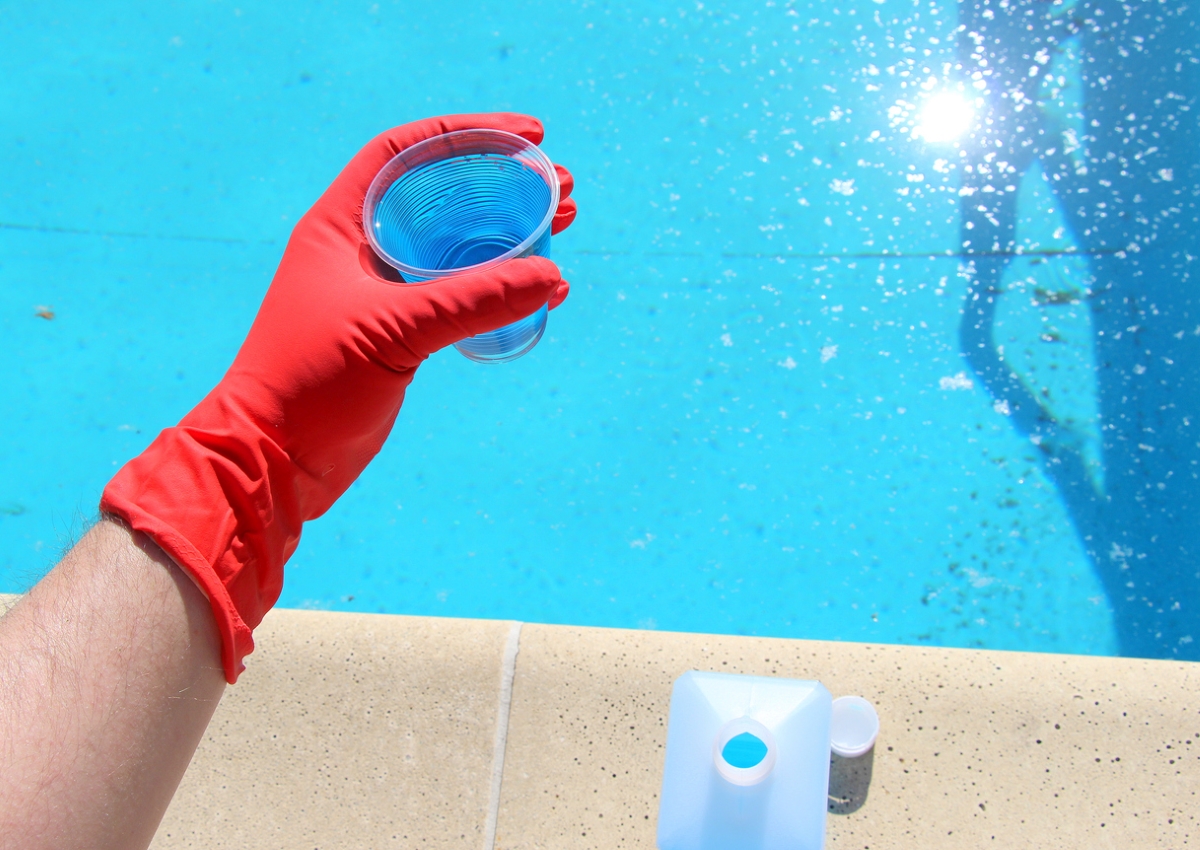
Hydrogen peroxide is a safer and more environmentally friendly alternative to chlorine for keeping a pool clean. While hydrogen peroxide alone may not be an effective disinfectant for pool water, it has effective oxidizing properties, which help to break down organic matter that would otherwise support the growth of harmful bacteria and fungi. When using hydrogen peroxide in a pool, it’s important to use the correct ratio. The recommended ratio is between 50 and 90 ppm. Test the water regularly to ensure that the proper hydrogen peroxide levels are maintained.
20. Disinfect garden pots and tools.
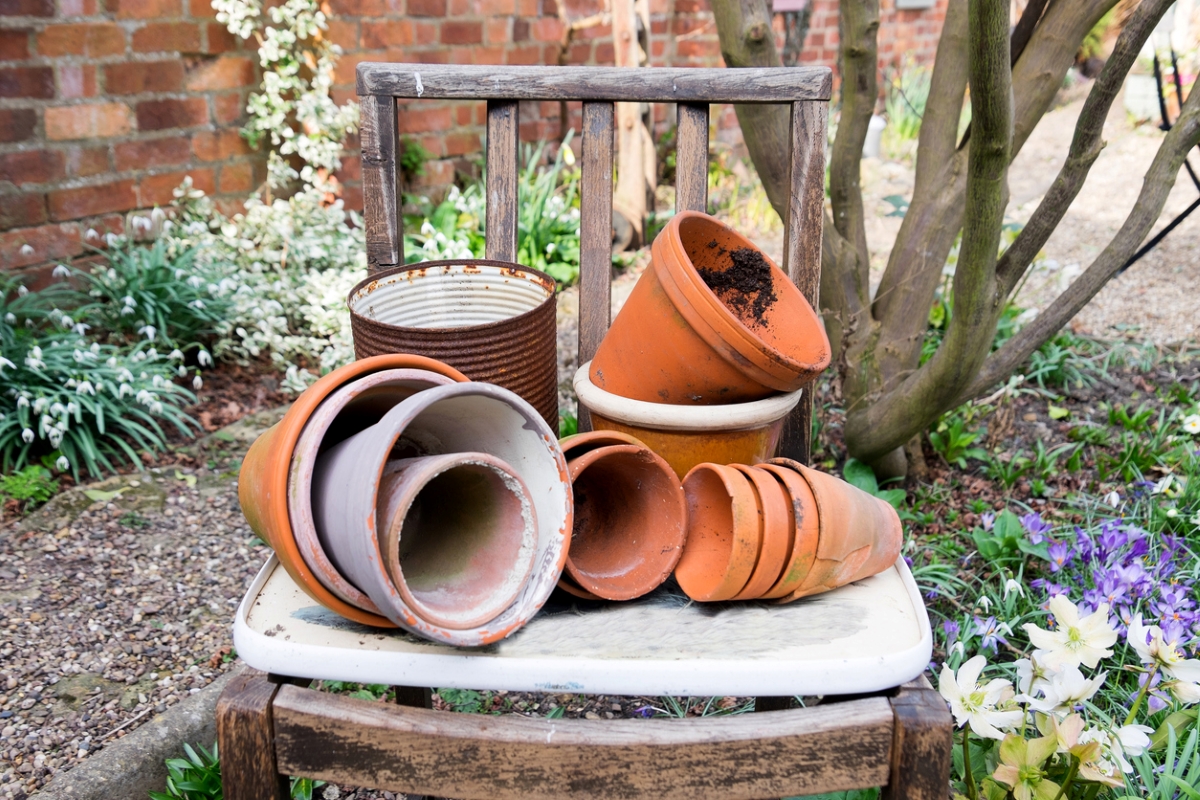
According to the CDC, hydrogen peroxide is a disinfectant that’s effective at killing harmful bacteria, viruses, and fungi, making it an ideal tool for keeping your garden equipment clean and free of pathogens. To disinfect your planters, containers, and garden tools with hydrogen peroxide, wash them thoroughly with soap and water first. This should remove any visible dirt or debris. Next, mix one part 3-percent hydrogen peroxide with nine parts water in a spray bottle or container.
Spray or soak the containers and tools in the solution, making sure to coat all surfaces thoroughly. Allow the solution to sit for up to 2 hours, then rinse the items with clean water and allow them to air-dry.
21. Soak seeds to help them sprout.
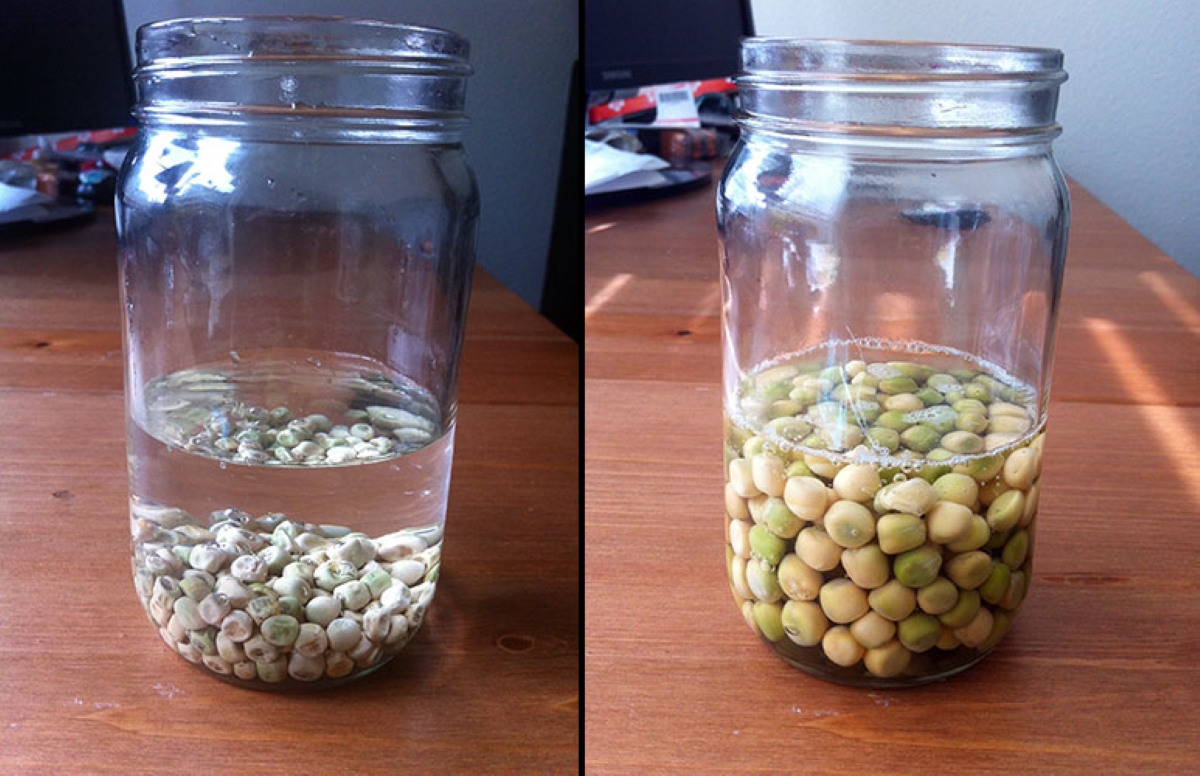
Hydrogen peroxide can be a big help when you’re starting seeds for the garden. When seeds are soaked in a solution of hydrogen peroxide and water, it can help to break down the outer seed coat, allowing the seed to absorb water more quickly and speed up the germination process. Hydrogen peroxide can also kill any harmful bacteria or fungi that may be present on the seed’s surface, thus reducing the risk of seed rot or disease.
To use hydrogen peroxide for seed germination, mix one ounce of 3-percent hydrogen peroxide with a pint of water and soak the seeds in the solution for up to 24 hours. After soaking, rinse the seeds thoroughly with clean water and plant them as usual.
RELATED: 10 Things Every New Gardener Needs to Know
22. Wash produce.
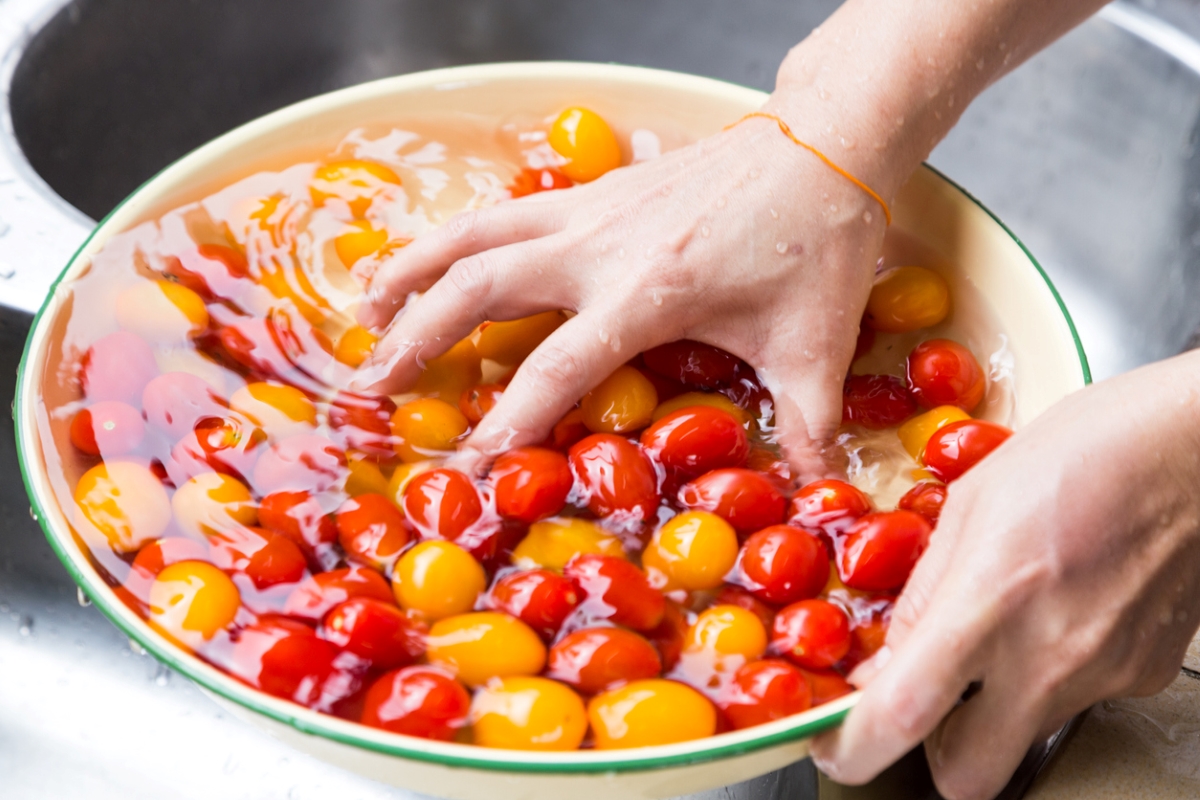
Peroxide is an efficient, budget-friendly way to eliminate germs and pesticides from fruits and vegetables while extending their shelf life. It is a safe way to sanitize produce, provided the hydrogen peroxide solution is properly diluted, and the veggies are thoroughly rinsed afterward. To use this method, fill a clean sink or a large bowl with water and add ¼ cup of peroxide. Soak the produce in the water and peroxide mixture, then rinse thoroughly with clean water and dry before putting the produce in the fridge.
23. Clean the dishwasher.
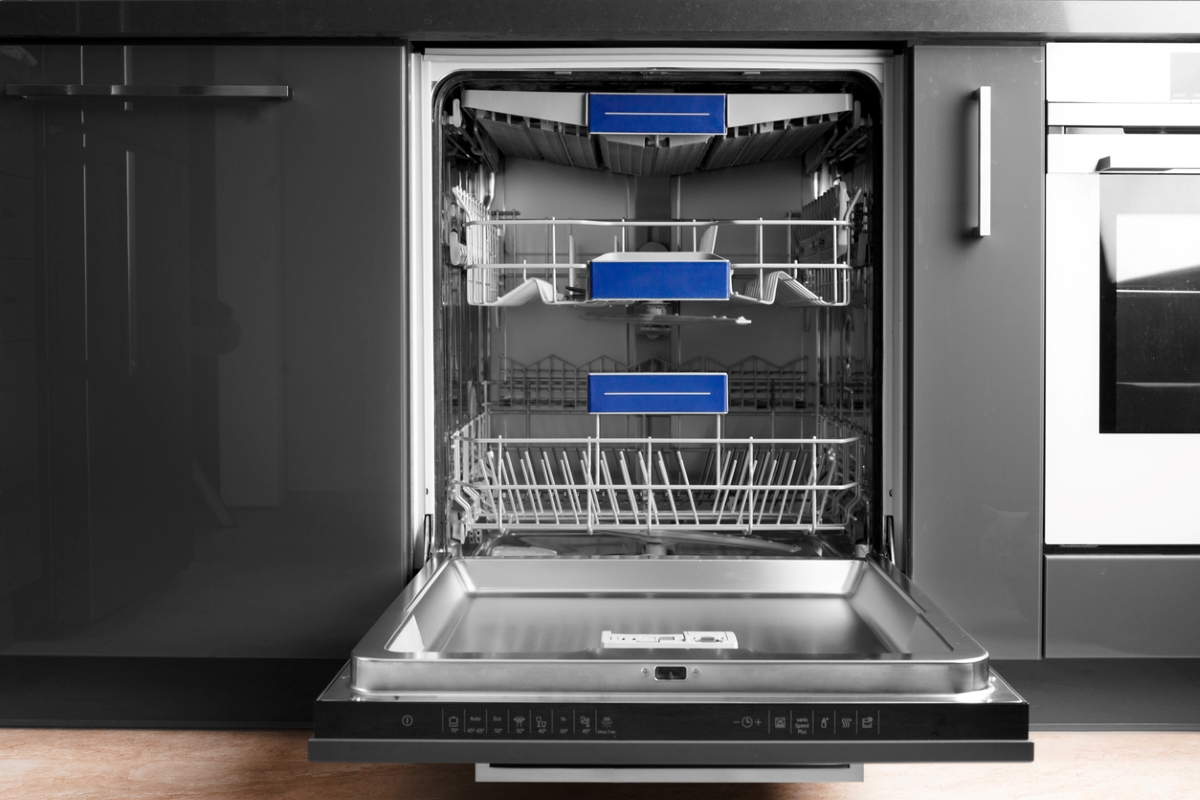
Using hydrogen peroxide for cleaning your dishwasher is an effective way to remove buildup and bacteria. To get started, empty the dishwasher of all dishes and remove any large pieces of debris or food from the bottom. Then, pour 1 cup of hydrogen peroxide into the bottom of the dishwasher and run a hot water cycle. You can also add a ¼ cup of hydrogen peroxide to a standard dishwasher load to boost the appliance’s disinfecting power.
